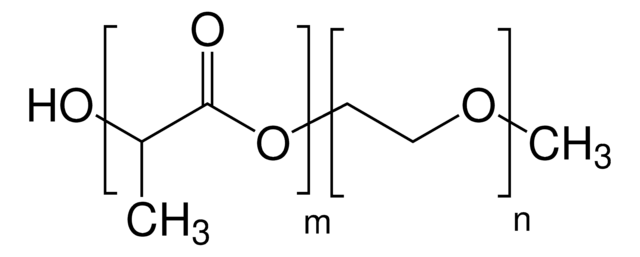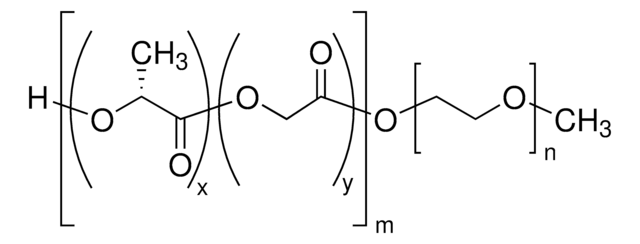918962
Poly(ethylene glycol) methyl ether-block-poly(D,L lactide)
PEG average Mn 5000, PDLA average Mn 50000
Synonym(s):
Biodegradable, Block copolymer, Drug delivery, PEG-PLA, PLLA, mPEG-PLA, mPEG-PLLA
About This Item
Recommended Products
form
solid
Quality Level
mol wt
PDLA average Mn 50,000 (by NMR)
PDLA average Mn 50000
PEG average Mn 5,000 (by NMR)
PEG average Mn 5000
color
white to yellow
storage temp.
2-8°C
Looking for similar products? Visit Product Comparison Guide
Application
Storage Class Code
11 - Combustible Solids
WGK
WGK 3
Choose from one of the most recent versions:
Certificates of Analysis (COA)
Don't see the Right Version?
If you require a particular version, you can look up a specific certificate by the Lot or Batch number.
Already Own This Product?
Find documentation for the products that you have recently purchased in the Document Library.
Our team of scientists has experience in all areas of research including Life Science, Material Science, Chemical Synthesis, Chromatography, Analytical and many others.
Contact Technical Service







